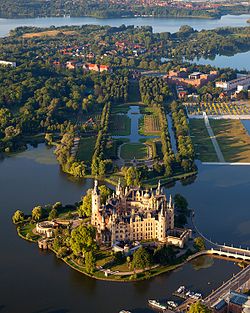| Schloss Schlemmin | |
|---|---|
| Schlemmin, Mecklenburg-Vorpommern | |
 Schloss Schlemmin | |
| Site information | |
| Type | Schloss |
| Location | |
| Coordinates | 54°13′21″N12°40′45″E / 54.2225°N 12.679167°E |
Schloss Schlemmin is a Gothic Revival Schloss in Schlemmin, Germany. It is a hotel and restaurant.


